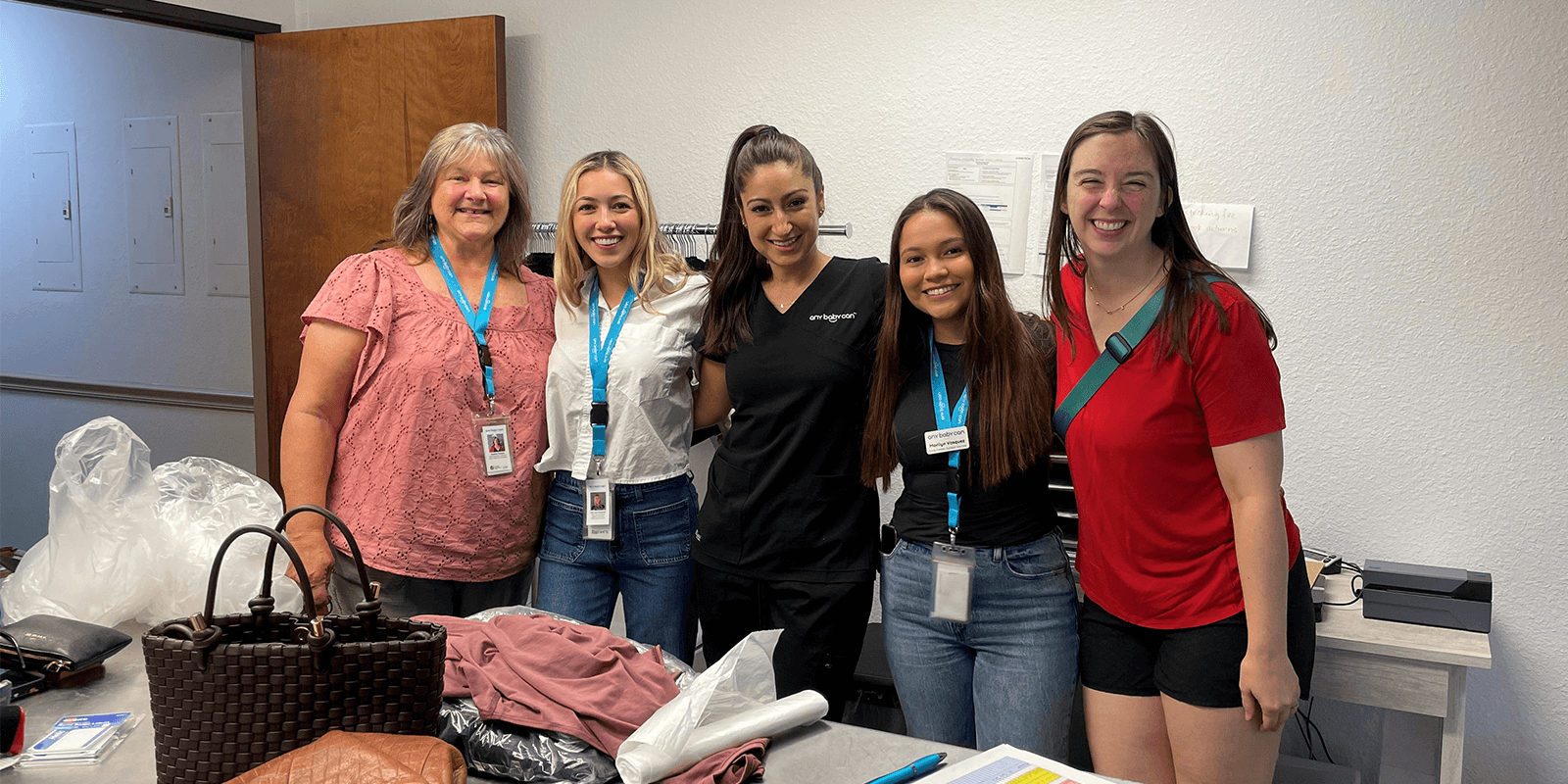Helping Moms and Babies with Robots

Category: News
June 21, 2024
Robotics Process Automation
Partnering directly with parents and children is at the core of our mission. This involves a lot of work behind the scenes. One time-consuming, but critical task is entering data in database systems, which helps us track progress, update families, evaluate our work and make improvements.
A few years ago, our Nurse-Family Partnership program explored ways to make data entry easier and found a tool called Robotics Process Automation, or RPA, which uses automated software to input information in multiple places. Before we found RPA, our staff had to enter the same data into three different databases manually. This took a lot of time and there was a risk of mistakes.
Background
Nurse-Family Partnership (NFP) is a nation-wide program for first-time pregnant mothers. Due to reporting requirements, our NFP program has to keep three different databases updated: our Any Baby Can database, the NFP’s National Service Office database, and a database through the state of Texas’ Health and Human Services.
Our nurses enter data into our system after visits, which helps them keep track of individual family needs, goals, and health metrics. Then our program assistants move information from our agency database into a nearly identical database used by the national office. In addition, nurses also needed to replicate some of that information into the state database.
Pioneering a New Way
Any Baby Can connected with UiPath, who provides the software robots that can emulate a human’s actions. We’re one of the first nonprofits that UiPath has worked with, and they have generously provided an in-kind donation that has made Robotics Process Automation a financially viable solution.
We’ve also been working with InterImage, a software development firm, who codes the robots to export everything from one database and imports it to another, entering data exactly how our staff would except at high speeds and with no data entry errors.
While it’s exciting to be one of the first nonprofits to utilize Robotics Process Automation with government agencies, it also presents unique challenges. We had to get approval from the NFP National Service Office and Texas Health and Human Services before starting the project. In early 2021, we embarked on this process. Everyone had a lot to learn along the way! Who needs to approve this technology? What are the standards? What do we need to document and report?
One important thing to note is that there is no machine learning or artificial intelligence involved in our robotics automation. This has eased any objections and has made conversations much easier both within our organization and for external partners.
We made progress through education, advocacy, and many conversations with people in IT, legal, programs and more. Ultimately, the buy-in was there and both the NFP National Service Office and the state were excited about this opportunity.
Testing and Implementation
Once we integrated the robots with the databases, we could begin testing the process and ironing out the little details. The project has been a highly beneficial collaboration between our team, UiPath and InterImage. With each part of the project, we’re checking the robot’s work, updating processes and code, and problem-solving. Since our database and the NFP National Service Office database are so similar, we were able to implement this step more quickly. However, it took longer to work with the government database, which has different fields and is time-dependent based on the mom’s pregnancy and age of the child.
In January 2024 we started the last part of the testing period. In the last five months, our nurses and program assistants have been able to step back from data entry! We still have staff overseeing the robot’s work and expect to see more staff time shift from data entry to family services.
Rewards of Innovation
Through the Robotics Process Automation, we predict cost savings, efficiency gains, and more time for what we do best: working with families! We estimate a reduction in data entry time for program assistants of up to 75%, and 5-10% for our nurses. The result would be an estimated cost savings of $156,000 to $212,000 each year.
Since data entry can be a pain point, this also improves staff morale and retention. We also expect to see a reduction in data errors.
Ultimately, this innovation will free up staff time for more fulfilling client-focused work. Success of this project paves the way for wider adoption in the future.
Paving the Way
We look forward to an expanding relationship with UiPath as we hope to roll out similar automation projects in other departments.
We’re also serving as a leader, advocate and teacher as we share learnings with other organizations. Many groups have been deterred by start-up costs, lack of awareness, and the general “newness” of using this technology. But as it becomes more common and successes more visible, the entry costs will go down and robotic automation will become accessible.
Moving in this direction, we can streamline operations and dedicate more resources to our core mission. Overall, we're excited about the changes this technology will bring and the positive impact it will have on our organization!
Share:
Share:
Share:
RELATED RESOURCES
Read about our impact and key accomplishments towards our vision.
We partner first-time parents with registered nurses through pregnancy and beyond.
Connect with our work and support thousands of families in Central Texas.






